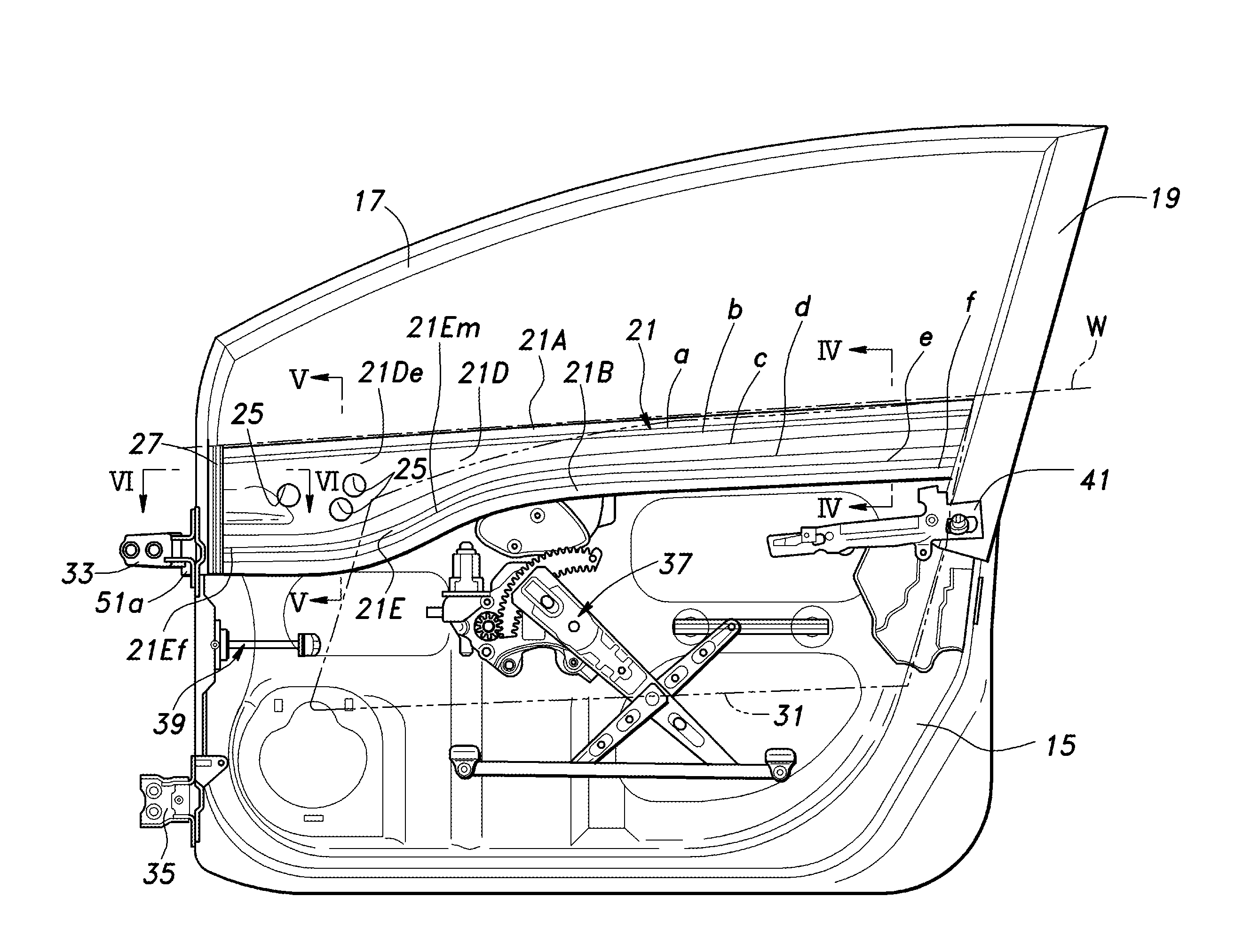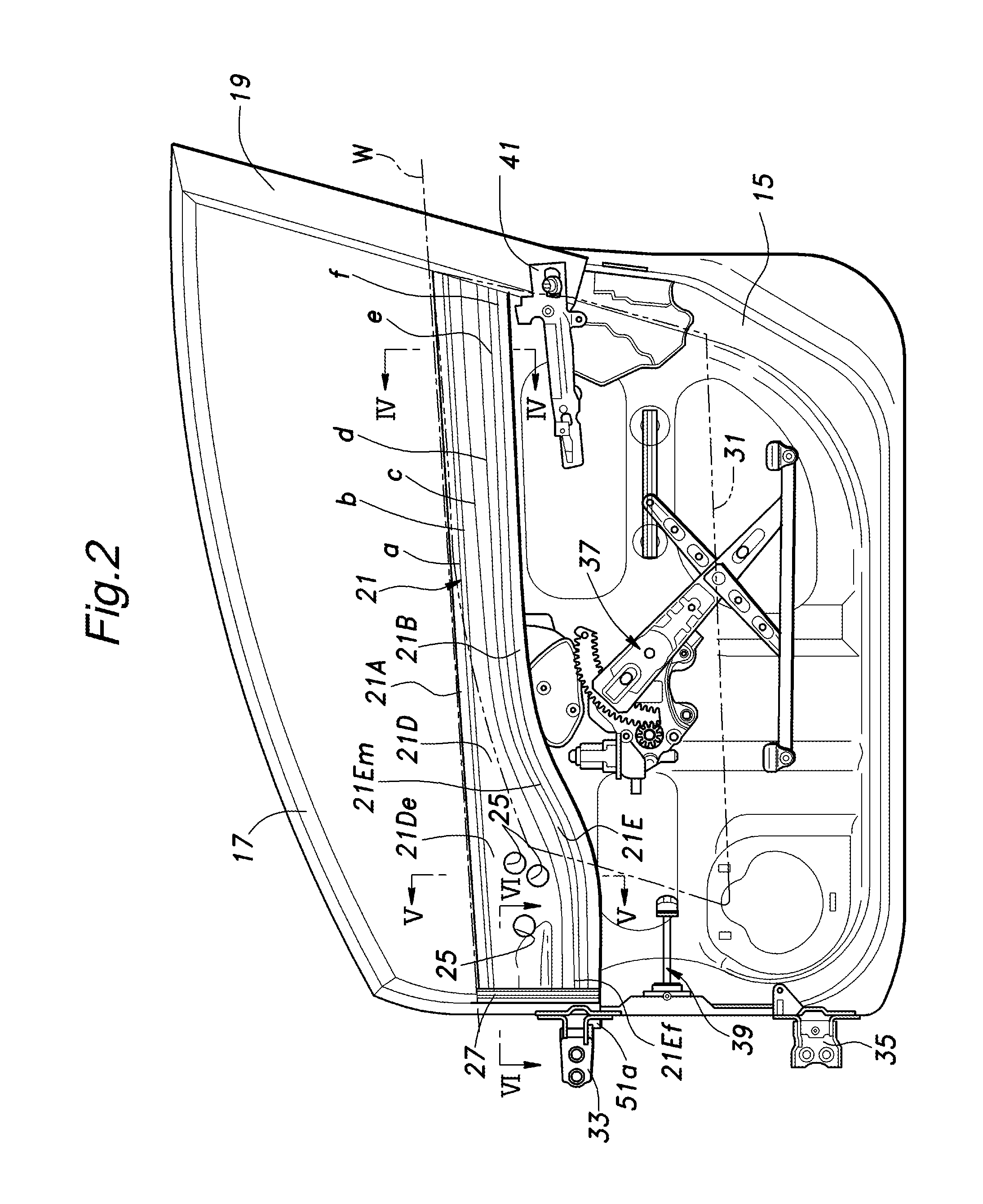Vehicle door structure
a technology for doors and vehicles, applied in the field of vehicle door structures, can solve the problems that the reinforcement beam may not be able to effectively perform its function, and achieve the effects of avoiding deformation of the door structure, reducing the reaction force, and effectively absorbing the energy of the side crash
- Summary
- Abstract
- Description
- Claims
- Application Information
AI Technical Summary
Benefits of technology
Problems solved by technology
Method used
Image
Examples
Embodiment Construction
)
[0027]An embodiment of the vehicle door structure of the present invention will now be described in the following with reference to FIGS. 1 to 6.
[0028]FIG. 1 is a view of a motor vehicle incorporated with a vehicle door structure embodying the present invention. In FIG. 1, numeral 1 denotes a vehicle body 1, numeral 3 denotes front wheels, numeral 5 denote rear wheels, numeral 7 denotes front side doors 7, numeral 9 denotes rear side doors 9, and numeral 11 denotes a tailgate.
[0029]The vehicle door structure of the present invention is applied to the front side door 7 in the illustrated embodiment, but can be applied to either the front side door 7 or the rear side door 9.
[0030]A shown in FIGS. 2-6, the front side door 7 comprises an outboard outer panel 13, an inboard inner panel 15, and a door sash 17 attached to an upper part of the inner panel 15 and defining a door window opening 19 jointly with the inner panel 15. The outer panel 13 and inner panel 15 are formed by stamp form...
PUM
 Login to View More
Login to View More Abstract
Description
Claims
Application Information
 Login to View More
Login to View More - R&D
- Intellectual Property
- Life Sciences
- Materials
- Tech Scout
- Unparalleled Data Quality
- Higher Quality Content
- 60% Fewer Hallucinations
Browse by: Latest US Patents, China's latest patents, Technical Efficacy Thesaurus, Application Domain, Technology Topic, Popular Technical Reports.
© 2025 PatSnap. All rights reserved.Legal|Privacy policy|Modern Slavery Act Transparency Statement|Sitemap|About US| Contact US: help@patsnap.com



